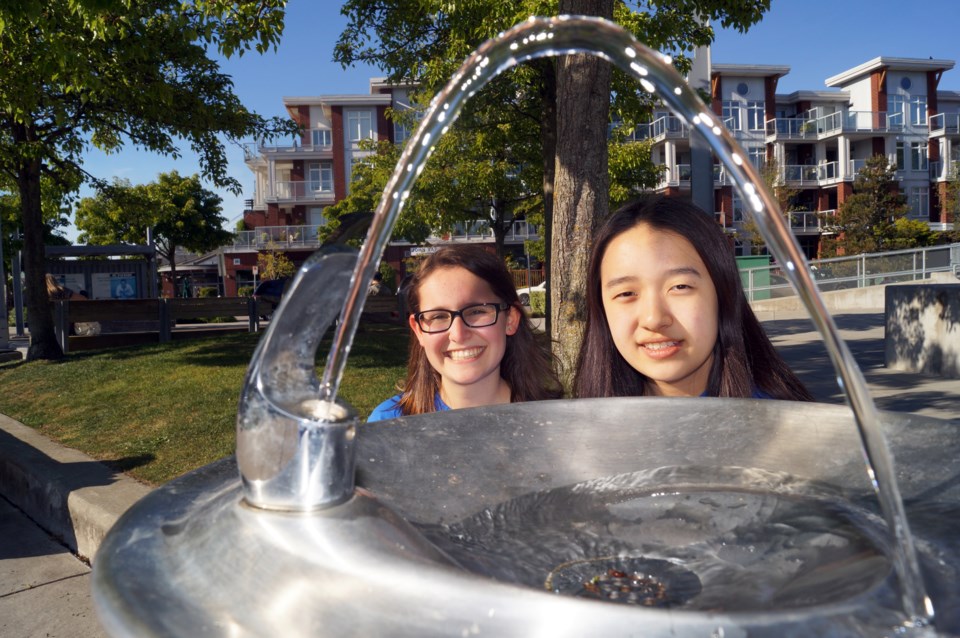Out of the mouths of babes: “We have some of the freshest and cleanest water in the world and yet we’re buying bottled water. That defies the purpose of being next to a clean water supply,” notes Grade 11 student, Emma Lu.
But as wise as her words are, finding somewhere to fill your reusable water bottle can be a challenge in Richmond.
That’s why Lu and her group of local high school students are advocating for more access to fresh drinking water, both here in the city and around the world.
Lu and Jana Caine, both Grade 11 students at Palmer secondary, have founded a grassroots organization to, among other things, advocate for more drinking fountains.
“When we discussed global issues (in Technology 11) what struck me and Jana the most was the water issues,” said Lu.
Their newly-founded Glass Half Full Foundation’s first order of business is to bring public fountains out of hiding. (see GHFFoundation.org).
“It’s hard to locate a fountain or water bottle filler around Richmond,” added Caine, sporting her new, blue GHFF t-shirt, alongside Lu at the Steveston Boardwalk, the location of a city fountain.
The duo wants to implement a mobile application that uses GPS coordinates as well as signage in parks or on streets to help people find nearby water fountains.
Neither have studied the number of water fountains in the city nor their locations but are going off their observations, having grown up in Richmond.
The City of Richmond maintains 35 water fountains across the city and two mobile water stations for events, according to spokesperson Ted Townsend. That number doesn’t include fountains inside city facilities, such as community centres.
“We do encourage drinking of tap water as a healthy, safe and environmentally-sustainable choice,” said Townsend.
Lu and Caine said with more knowledge of exact fountain locations, more people will be able to fill up.
“We’ve all been at that place and we’re really thirsty but there’s nothing around. So, you go buy a drink at McDonald’s or you buy bottled water. Why should it be that way?” asked Caine.
Caine and Lu hope to grow their foundation and link their local efforts to more global issues, where fresh water is fast becoming a scarce resource.
“We flush water down our toilets but people in other places don’t even have enough to drink. So it’s all connected. Even if people don’t think about it that way, there’s only one planet and there’s only so much water. So it’s our duty to protect it,” said Caine.
Metro Vancouver draws water from three reservoirs on the North Shore Mountains. Last year, due to drought, water restrictions were placed on activities such as lawn sprinkling.
If the region doesn’t reduce its water use to accommodate population growth, the region may need to tap into Harrison Lake as a source of fresh water. Globally, 884 million people don’t get water from a tap and 3,900 children die each day due to dirty water and poor hygiene, per United Nations data.
How to reduce water consumption:



